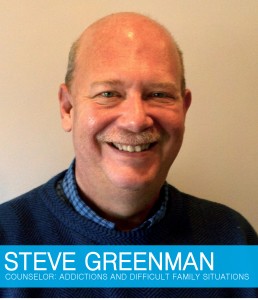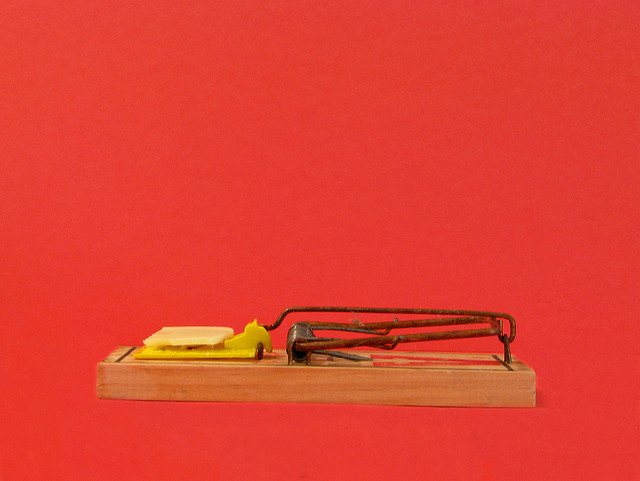What is rehab?
By Steve Greenman, MA, LPC, NCC
First, let’s start with a great quote about recovery and addictions:
“You can get the monkey off your back, but the circus never leaves town.” -Anne Lamott
Like any journey, the road to sobriety and addictions recovery begins with simple steps forward. The specific steps of one’s addiction rehabilitation process will vary according to the addiction, the treatment plan used, and the individual; however, all recovery processes share certain similarities.
What is in-patient rehab?
In the modern recovery world rehab can mean many things. To treat addictions a person can choose long term (usually 90 days) and shorter term (30 days to 2 weeks) in house programs. The benefit of inpatient programs is that an individual is isolated away from their substance of choice and gives the person an opportunity to begin to think clearly. Isolation away from behavioral triggers allows them to focus solely on their recovery without distractions from the outside world. Over time, family members and close friends may be invited to participate in visiting days or family therapy sessions. This helps to build the support system that is so crucial to recovering addicts once they leave the rehab facility.
What is out-patient rehab?
In outpatient the individual has freedom of movement and able to handle day to day activities of their life outside of a facility but depending on possible involvement of court system there could be testing put in place. An outpatient program gives the individual the opportunity to gather facts and converse with fellow members of the group to learn ways to gain coping skills to avoid the decisions of the past. Outpatient care is best for those with short-lived addictions. It is not recommended for those with serious or long-term addictions or those with dual diagnosis conditions.
Rehab.com states: “When it comes to addiction rehabilitation programs, there is no shortage of options out there but it’s important to find a program that is a good match for you. If you feel comfortable with the facility you’ve chosen, you’re more likely to stick with the program and see it through to its end, increasing your chances of long-term health and sobriety”.
How to choose a drug treatment program
According to the National Institute on Drug Abuse, there are several things to consider when choosing a drug treatment program. These include:
- There is no one-size-fits-all solution to treatment.
- Different treatments work for different people.
- Patients must commit enough time to treatment in order to effectively overcome their addictions.
- Everyone should have easy access to treatment when they need it.
- Addiction affects the way the brain works.
- Effective treatment should address all areas of the addict’s life, not just the abuse or addiction.
- Medicinal treatment is often necessary and should be used in conjunction with therapy.
- Treatment plans should continually be tailored to meet the individual’s needs and circumstances.
- Mental disorders are often linked to drug addiction and should be addressed in treatment.
Does rehab work?
Once an individual gets through the initial detox from drugs or alcohol, they will move on to the rehabilitation portion of the recovery process. This is where the patients get to the core reasons behind their addictions, addressing those issues so they can effectively move on with their lives without going back to drugs, alcohol or their addictive behavior.
In individual behavioral therapy, the patient will do this work by identifying when they began using the substance and why they started abusing it. The patient will receive strategies on how they can direct their time to focus on getting involved in new hobbies or interests. Time management skills will allow them to better use their time so they have less opportunity to think about relapse. Patients learn to identify triggers, and how to deal with these triggering situations when they come up. If patients have a plan for various tempting situations, they are more likely to put their plan into action and avoid relapse. This type of cognitive behavioral therapy also addresses thoughts that patients have in relation to substance abuse or life in general. It helps to reform their thinking patterns and make behavioral changes toward a healthy, sober life.
The addiction rehabilitation process usually includes group therapy. These group sessions allow the recovering addict to interact with others who are in the same situation. It is often helpful for recovering addicts to know that they are not alone in their struggles. Likewise, it can be beneficial for addicts to share their own stories of addiction and recovery, as others find solace in them. This sense of community support is integral to the recovery process.
Most addiction rehabilitation facilities offer family therapy as part of their program. Addiction is far-reaching, affecting many people rather than just the individual with the addiction. Family members are often those who are most deeply affected by their loved one’s addiction, and they are an important component of the recovery process for that person. Initially, patients may be restricted from contacting loved ones but later in the recovery process, family members are often welcomed to participate in family therapy sessions. During these sessions, family members can discuss pain caused by their loved one’s addiction and their desire to see that person live a healthy life. Family therapy can help to resolve issues so the family can serve as a pillar of support once their loved one leaves the rehabilitation facility.
How does recovery work?
After a patient has completed their rehabilitation program, they are not finished with recovery. In fact, recovery is a lifelong process that an addict must work at for the rest of their life. Sometimes, the path to lifelong recovery will be easy; other times, it will be difficult for individuals to withstand the temptation to relapse. Like anything in life, it’s a journey that may feature varying terrain so lifelong support is essential.
Prior to leaving an addiction treatment program, the patient will meet with counselors to discuss a plan for aftercare. Many addiction rehab facilities offer follow-up programs to assist the patient as they return to normal life. These may include weekend stays back at the rehab center when the individual feels a touch-up stay is needed. Or a patient may live in a sober living facility for a while with other recovering addicts before returning home. This offers a supportive transitional time for recovering addicts before being thrown back into “normal” life.
Many patients maintain regular therapy sessions post rehab, and some submit to schedule drug testing as a way to keep them accountable to their sobriety. Group therapy is a method for building a support system in your local area. Alcoholics Anonymous (AA) and Narcotics Anonymous (NA) are well-known 12-step groups that many recovering addicts attend on a very regular basis. Both AA and NA have meetings all across the country at easily accessible times.
There are various offspring’s of the AA model for a wide range of other addictions, such as Overeaters Anonymous (OA), Emotions Anonymous (EA), Gamblers Anonymous (GA) and Sex Addicts Anonymous (SAA). There are also subsets of NA for specific drugs, like Cocaine Anonymous (CA) and Crystal Meth Anonymous (CMA). Some addicts find the type of support they can get in very specific 12-step groups is more beneficial whereas other addicts gain the help they need from more general groups.
What is rehab? Conclusions
Whatever level of need for services you are there are important factors to consider in supporting the most important item: you’re sobriety. A setting that provides recovery in a holistic manner and provides services that treat the underlying reasoning behind the need to escape or numb through the use of a dependence and help those we serve to find long-term recovery by creating a sound environment in which they can and will recover are critical.
To help the one suffering with a substance dependency it is helpful to find serves that provide the following:
- Individual and Family Therapy
- Dependence Education
- Self-Realization
- Individual Treatment Plan Creation
The service must be helpful in creating goals in the recovery:
- Establishing an Individual Relapse Prevention Plan
- Daily Reflections and Meditations
- Learning How to Encourage Longer-Term Dependent Free Living.
- Creation of a Spiritual Based Premise of a Higher Power
To meet the goals prescribed above a service covers areas such as:
- Past and current medical history
- Employment and educational background
- Basic needs being met currently
- Substance abuse history
- Legal issues current and past
- Family/social genogram of dependent history
- Psychiatric diagnoses current and past
- Personal insights and supports each client has.
In the end the most important aspect of any rehab and recovery is that it is not just the mind towards one recovery but also the heart. One must be willing to sacrifice immediate gratification with at times a long arduous plan that leads to fulfillment in never-ending recovery. Let’s end with another quote that can be applied to recovery and rehab:
“Cut.
Take gazillion and one.
This time with a little less weepy-weepy, please. A little less improvisation. A little less lip. A little more faith. A little higher power. A little more prayer, a little less wine. Cut the crap. Cut the line. Tuck the chin. Look left, right, faster, slower. Pick seven dandelions on the first day of spring. Hate less or more. Work harder. Chew slower. Be better. Look to god, God, GOD. Watch your language. Watch your back. Collect rocks. Lick ’em clean. Count the pigeons in the backyard and multiply times forever. Give it up, let it go, take it back, take control. Say yes, say no. Say no, no, no. Stick to the script. Steps One through Twelve. One through Twelve. Keep coming back. It works if you work it.”
― Jessica Hendry Nelson
And so it goes.
 Steve Greenman, MA, LPC, NCC is a counselor at Mental Wellness Counseling in Traverse City, MI. He specializes in helping families dealing with complex family situations, addictions, and transitions. Steve is also helping clients through the Intensive Recover Program, which helps with recovery treatment, alcohol treatment, and other addictions treatment.
Steve Greenman, MA, LPC, NCC is a counselor at Mental Wellness Counseling in Traverse City, MI. He specializes in helping families dealing with complex family situations, addictions, and transitions. Steve is also helping clients through the Intensive Recover Program, which helps with recovery treatment, alcohol treatment, and other addictions treatment.
Image by Rennett Stowe


